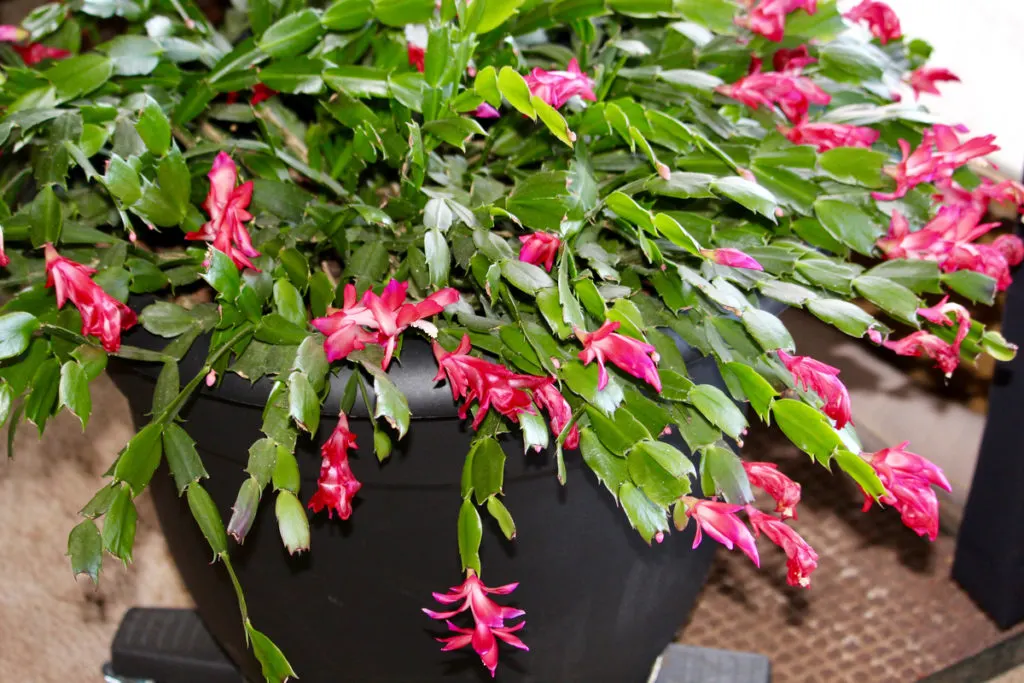
Easter cactus, or Rhipsalidopsis gaertneri, are often confused with their cousins – Christmas and Thanksgiving cactus. Maybe that’s why you’re here. You read this article about Christmas cactus and realized you actually have an Easter cactus. It’s an easy mistake to make. They all kinda look alike.
But read on, and we’ll explore some of the key differences. While their care is similar, you’ll need to know some important distinctions to grow a healthy, blooming Easter cactus.
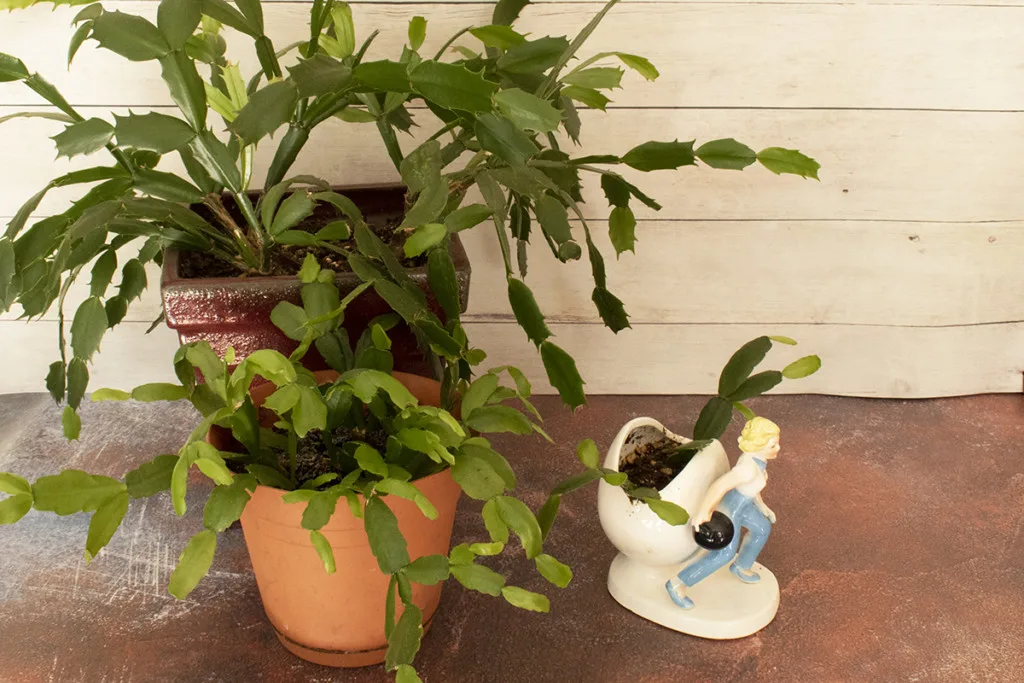
Easter Cactus – an Introduction
The Easter cactus also called the Whitsun cactus, is one of three cactuses, so named for the holiday they bloom close to here in the Northern Hemisphere. Most people are surprised to discover that an Easter cactus is a thing. When I saw my first, I thought it was a Christmas cactus.
Just Pick a Genus Already!
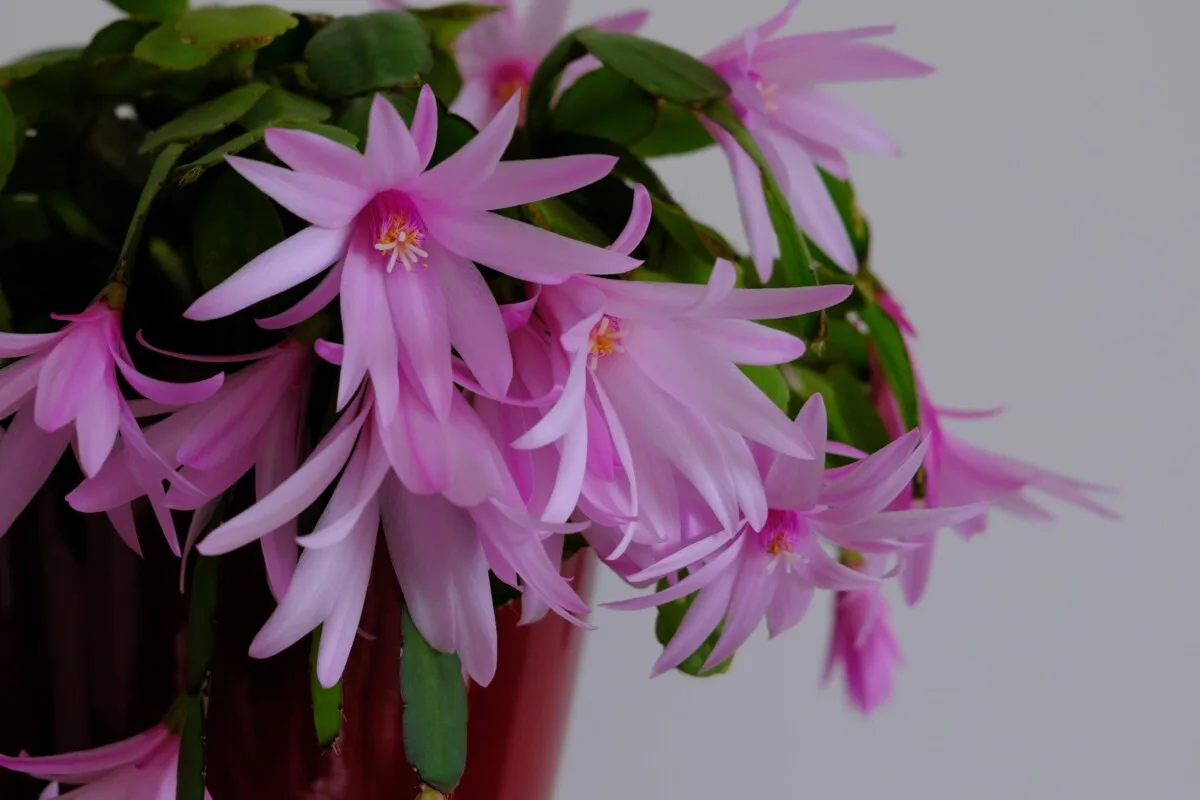
Of all the holiday bloomers, this one has stumped not only houseplant owners but also the scientists trying to classify it. It’s had more name changes than the late Prince.
It was first classified as Epiphyllum russellianum, then five years later, it was reclassified as Epiphyllum gaertneri. Nearly twenty-five years after that, another botanist decided it was better classified as Schlumbergera gaertneri.
From there, it bounced between Rhipsalidopsis and Schlumbergera, depending on whether you were trying to classify it by leaf segments or the shape of its flowers.
Finally, in 2011, it was placed back in Schlumbergera after genetic sequencing.
And then changed to Rhipsalidopsis again.
Quick, keep reading before the botanists decide to reclassify it!
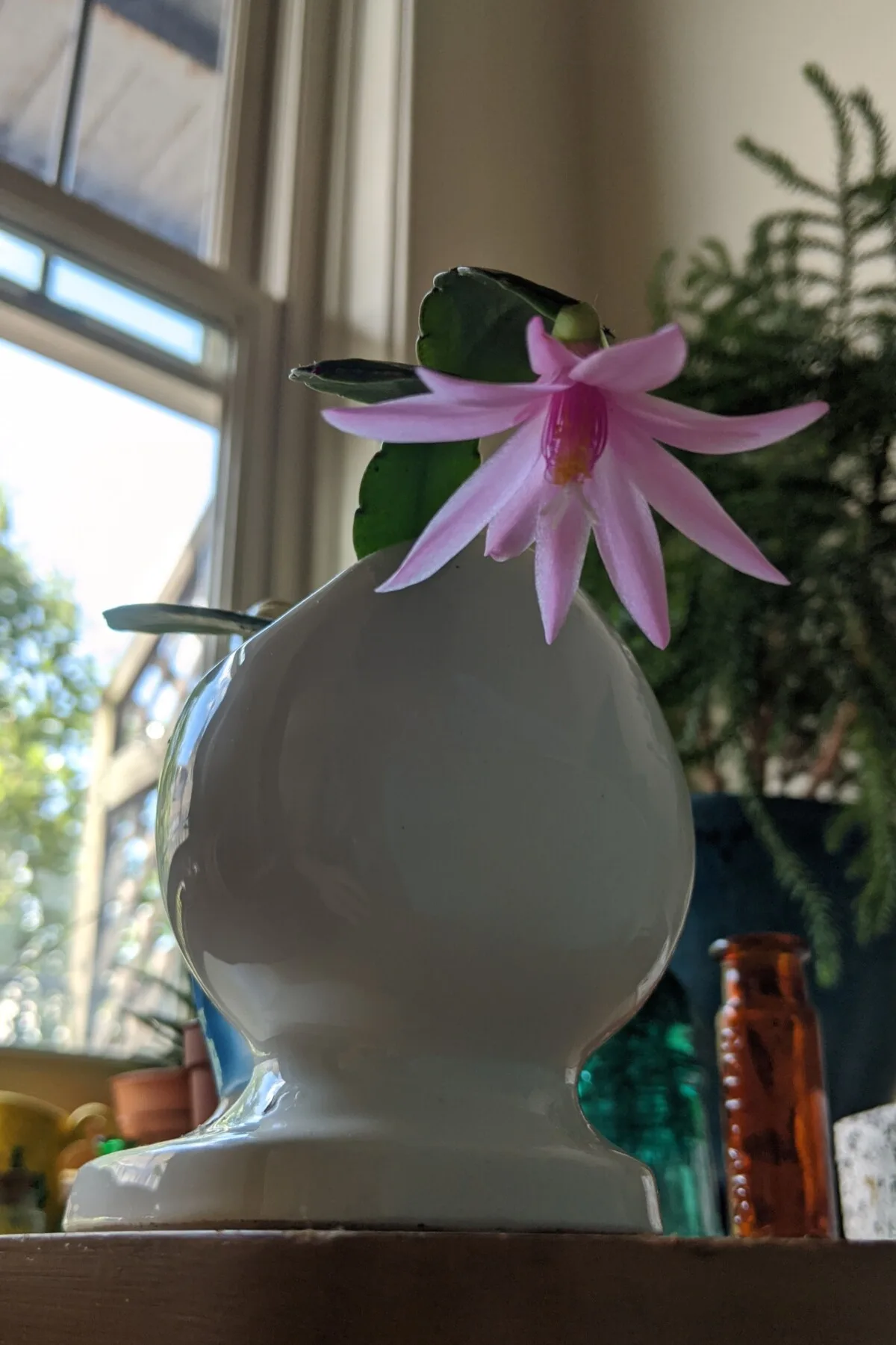
They aren’t as prevalent as Thanksgiving cactus, but with the current interest in houseplants, they’re becoming easier to find. I was surprised to find Easter cactus for sale in my local supermarket last spring.
I found mine at my favorite craft distillery several years ago. They had two of them sitting on the bar along the wall facing the windows. I knew at once it was a Schlumbergera (excuse me, I mean Rhipsalidopsis), but I wasn’t sure what kind. I got to pinch off a small segment with several cladodes to propagate. It had its first hot pink blossom within a year, and I was hooked.
How to ID an Easter Cactus
If the plant isn’t in bloom, you’ll have to examine the cladodes or “leaf” segments closely. Luckily, they’re the easiest to identify. An Easter cactus has oval-shaped cladodes with scalloped edges. It lacks the points of a Thanksgiving cactus and isn’t as elongated (rectangular) as a Christmas cactus.
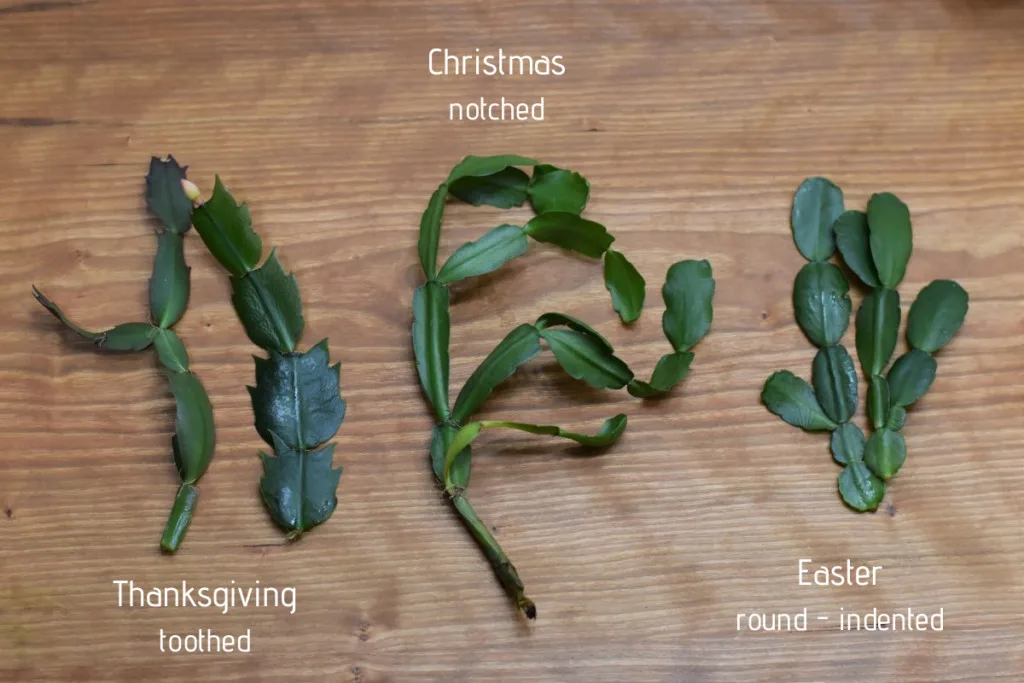
Once an Easter cactus blooms, it’s easy to see the difference. Their blossoms are altogether different than the elongated tubes of a Christmas or Thanksgiving cactus. Easter cactus blooms are more radial, looking more like a daisy. True Easter cacti grow bright scarlet blooms but have been crossed with Rhipsalidopsis rosea to achieve pink, white and orange blooming hybrids.
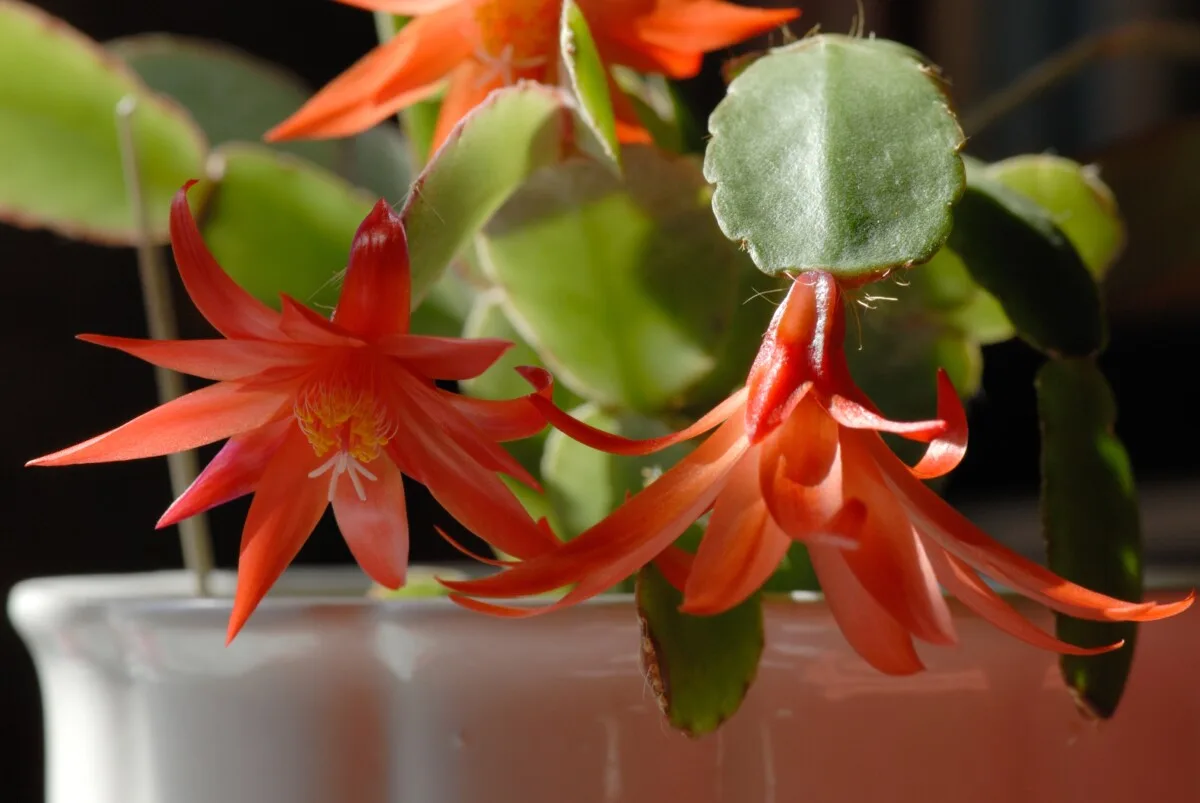
You can find Easter cactus cuttings easily on eBay and Etsy. Once you receive your cuttings you’ll need to pot them up and nurture them into plants. Our guide on buying Christmas cactus cuttings and what to do with them when you receive them is your friend for that.
For larger live plants, Amazon have a number of listings here, but beware as buying houseplants on Amazon can be very hit or miss.
The blooms are gorgeous, but these plants require patience, as they’re much slower growing than their winter holiday cousins. They can also be a bit finicky regarding water, but a consistent routine will help them thrive.
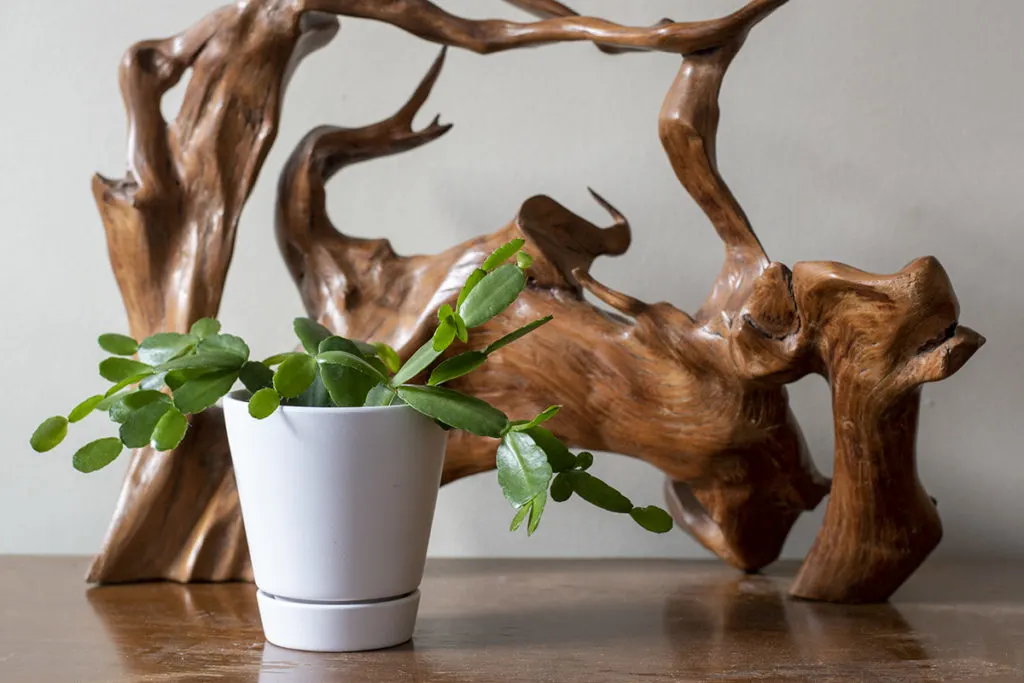
They’re surprisingly long-lasting, too. Easter cacti are one of the few tropical houseplants you can grow for decades with good care. Especially once you realize that’s what you have – an Easter cactus rather than a Christmas cactus.
They are a true cactus but look nothing like their spiney, desert-dwelling cousins. No bitey parts here. The plant is basically a group of long stems made up of individual segments called cladodes. While they’re often referred to as leaves, they aren’t true leaves. Each cladode is a little photosynthesis power plant. As the plant ages, the cladodes closest to the soil become tough and woody. This is a good indicator of an older plant.
Native Habitat
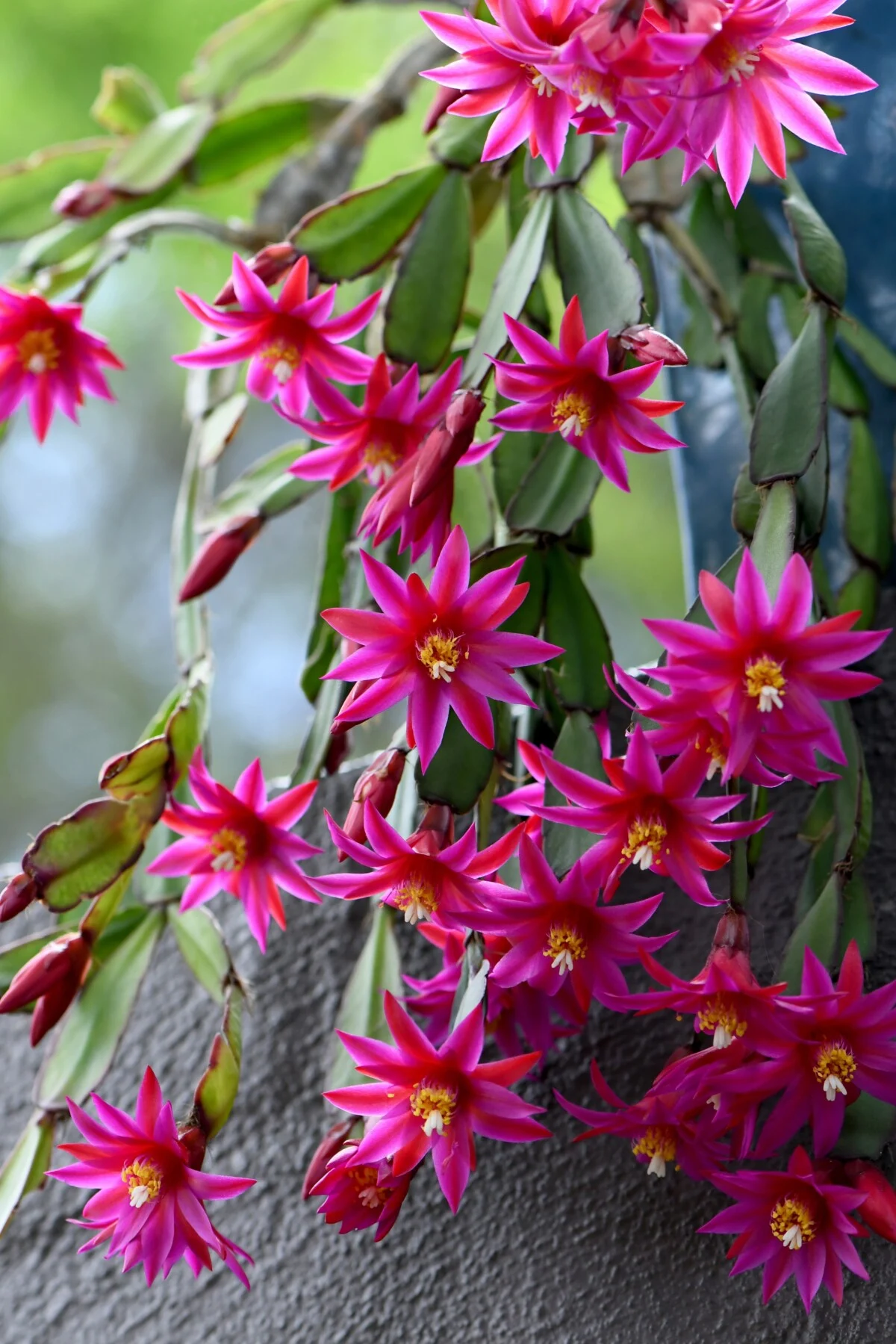
I’m a firm believer in learning about the native growth habits of houseplants. Knowing where and how they grow in the wild provides a template for mimicking those conditions in our homes. It can be the difference between having a plant that survives or having a plant that thrives.
Easter cacti are found in the wild in southeastern Brazil, in high altitudes, growing in humid, tropical conditions. They are an epiphytic plant, meaning they cling to trees or sometimes rocks. The cacti are not parasitic but use the trees for shelter from direct sun and as a place to collect water and nutrients. They don’t grow in soil but instead collect nutrients from the organic matter that collects where they grow – in the crooks of tree limbs or rocks.
These plants are photoperiod blooming, which means they set buds based on how much light they receive daily. While Christmas cactus and Thanksgiving cactus are short-period bloomers, setting blooms as the days shorten, Easter cactus are long-period bloomers, setting blooms in the spring as days begin to lengthen again.
It’s funny when you think about it. In their native areas, the Easter Cactus is more likely to bloom around Christmas, and the Christmas cactus is more likely to bloom around Easter.
Even with that little information, it’s easy to pick out some things you’ll have to do differently in your home for them to thrive. Let’s learn how to care for them properly so you can enjoy your Easter cactus for years.
Related Reading: 9 Underrated Houseplants That Deserve A Spot On Your Shelf
Easter Cactus Care
Light Preferences
As epiphytes, Easter cactuses don’t tolerate direct sun. They prefer bright, diffused light. Place them near a window, but not in it. If you wish to keep them outdoors in the summertime, place them in a somewhat shady area. They shouldn’t be subjected to full sun, or they will burn.
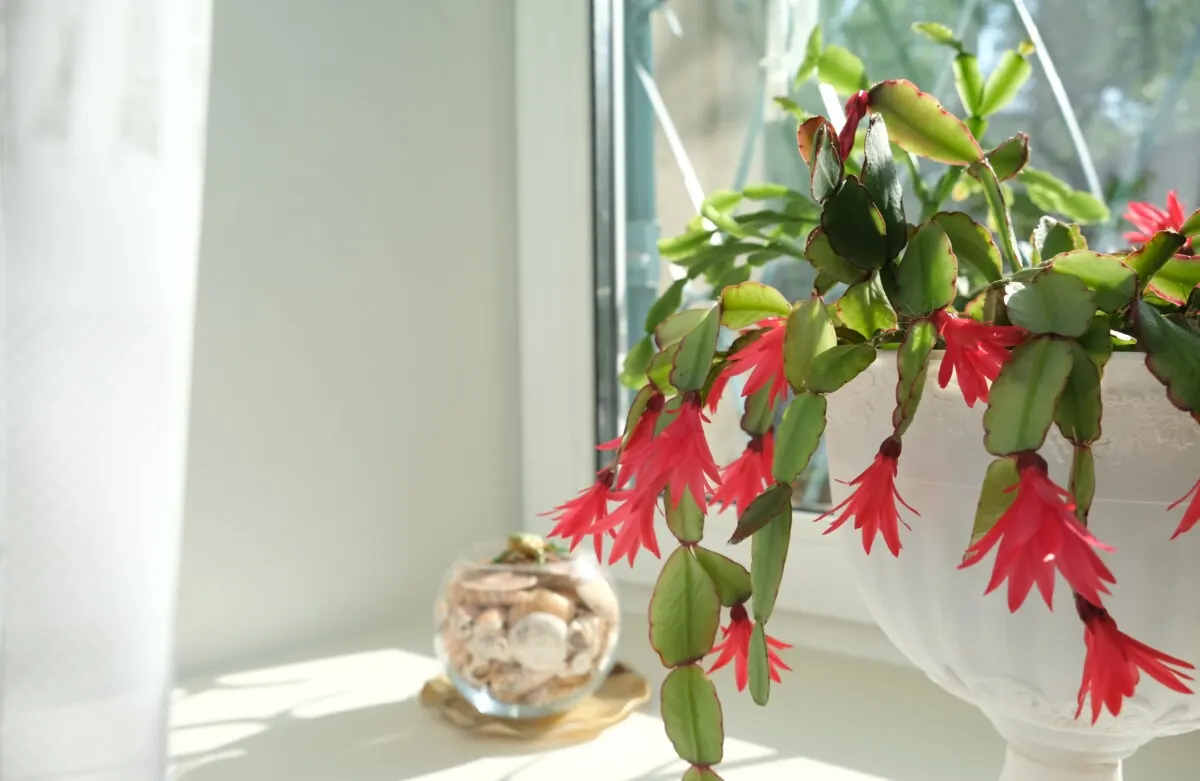
In the winter, when they are in their dormant state, keep them in a room that receives less natural light and avoid exposing them to artificial lights in the evening. You want the plant to experience light as it would in nature.
Temperature
As a tropical plant, they prefer to be toasty and humid for most of the year. A consistent temperature of around 75F (plus or minus five degrees) will keep them happy. During their dormant period (usually starting in November in the Northern Hemisphere), they prefer cooler evenings, 45-55F and short days.
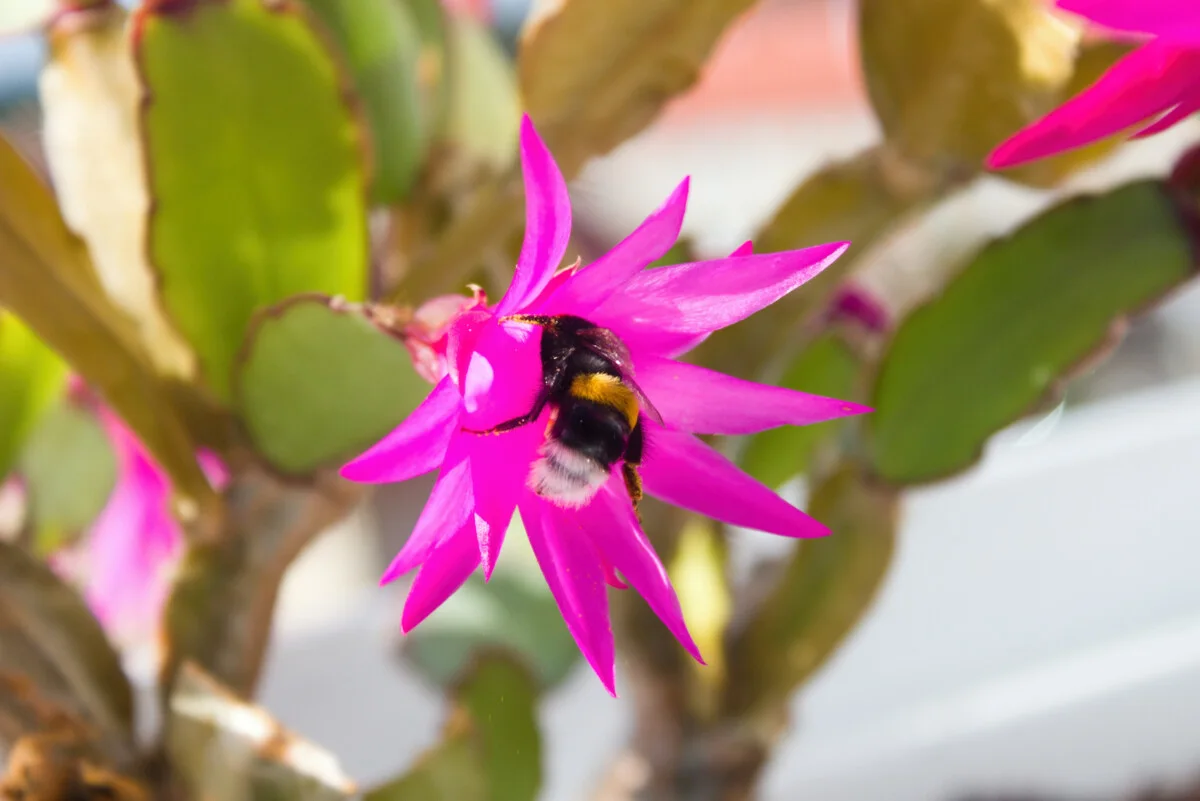
Water
This is where Easter cactus can be a bit finicky. Most epiphytes hate wet feet and are notoriously prone to root rot. Easter cactuses prefer moist soil but are prone to root rot, so getting the water right is key.
You still want a well-draining, light, aroid potting mix, but you don’t want the plant to dry out. You may need to water your Easter cactus more frequently to keep the soil moist. Don’t let them sit in standing water; they will develop root rot. As always, checking the soil with your finger to see if it’s dry before watering is best. Water the plant if the soil is dry to ½”-1” below the surface.
The best way to develop a good watering routine is to pay careful attention to your plant and the soil moisture over several weeks. Stick your finger in the soil each time you pass by to gauge how quickly it dries out, watering more or less frequently as needed.
During the winter, when the plant is dormant, you can water less frequently, but again, don’t let the plant dry out completely.
Easter cactuses also need to be in a humid environment. If you have a sunny bathroom, that’s a great spot for them. You can also run a humidifier or use a pebble tray.
Soil Needs
Potting media for an Easter Cactus will differ slightly from most epiphytic plants. They prefer moist soil, but not too moist. They need well-draining soil, but it has to hold moisture.
I use regular, old all-purpose potting soil for my Easter cactus with an equal amount of perlite or vermiculite mixed in. I’ve tried aroid potting soils, and they don’t seem to hold enough moisture to keep my Easter cactus happy.
Again, the best thing you can do is experiment and see what your plant prefers.
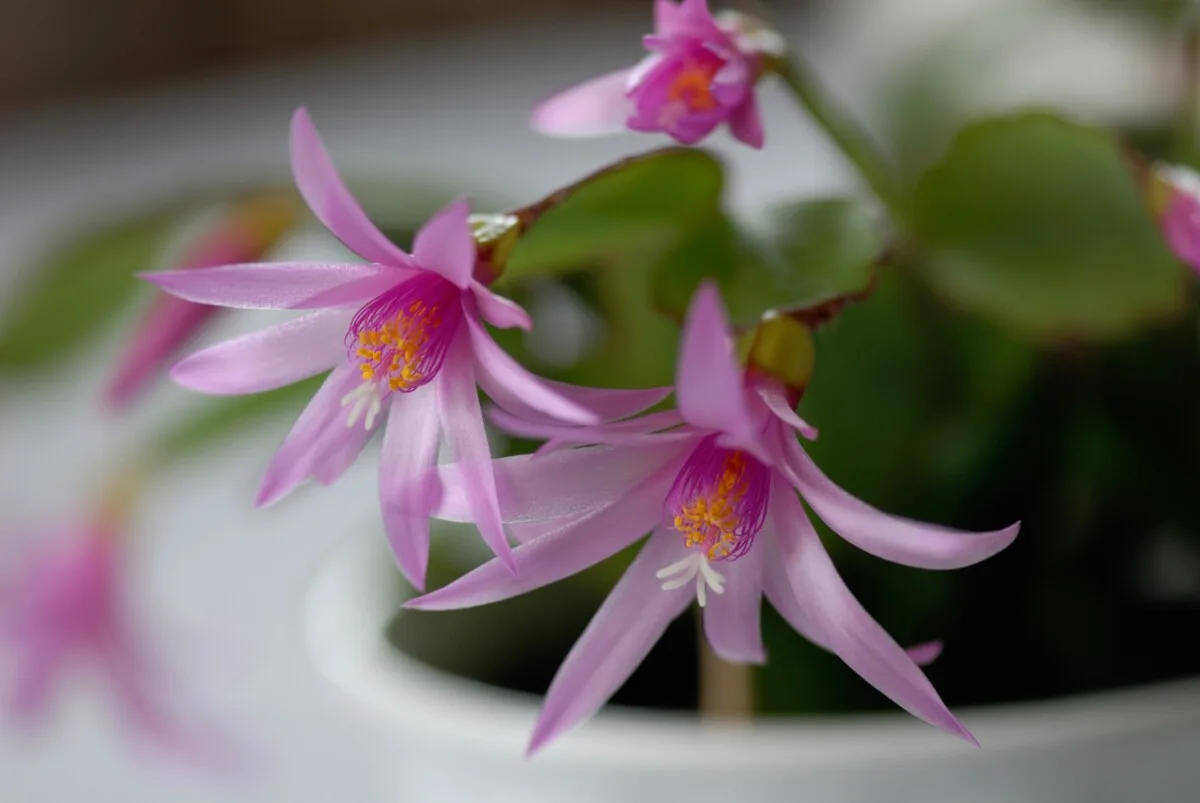
Pot & Repotting
If annual repotting sounds more like a chore than an enjoyable activity, you’re in luck. Like most epiphytes, Easter cactuses prefer to be pot-bound.
Provided you start them off in the appropriate potting media, you will only have to repot your plant once every three or four years. Let them get good and snug before potting them up. You’ll end up with more growth and blossoms.
Granted, this is different than being severely rootbound.
If your plant has roots growing out of the bottom of the pot and you can see the roots poking up above the potting medium, then it’s time to repot your Easter cactus. Another way to tell your plant needs a bit more room is if it stops putting out new leaf segments during its active growing season.
When it’s time to repot them, you can trim back some of the root growth and repot them in the same pot or move them to a larger pot. I wouldn’t put them in a pot over 1” larger than their previous pot.
Of course, every houseplant article dealing with these types of plants says that, and we all know pots usually increase by 2”. If that’s all you have, don’t sweat it. Just know you’ll have to wait a few months longer as your plant puts most of its energy into root production with all that extra space. In this case, it will most likely take longer to see growth and buds above the soil.
If you’ve given your plant excellent care, there’s no reason why it won’t last you decades. However, as they age, holiday cacti tend to get woody and brittle at the base. This means you can no longer repot them for fear of snapping off a segment. For aged specimens like this, trim any roots growing from the bottom of the pot and top dress with a bit of new potting media as needed.
Fertilizer
Easter cacti aren’t particularly heavy feeders. However, they do benefit from a consistent fertilizing schedule. You’ll want to feed them at full strength during their active growth period (usually in the summer if you’re in the northern hemisphere). Follow the directions of your chosen fertilizer.
A good, balanced NPK formula for houseplants is all you need. I prefer Dr. Earth Pump & Gro Indoor Plant Food. It’s an easy to use liquid fertilizer. I add it directly to my watering can and use it with every feeding.

My secret for giving my holiday cactus a big bloom boost is to use Schultz African Violet fertilizer starting in late winter, around February or March, just as the plant is out of dormancy. This stuff has been around for ages, but it does a good job of giving these types of plants the extra nutrients they need to put out lots of big, beautiful blooms.
Pests & Disease
Schlumbergera are generally quite hardy and rarely have pest or disease issues.
Root rot is the most common affliction but is easily prevented. Other bacterial and fungal infections can occur from overwatering, but these are also rare and easy to avoid.
Although uncommon, sometimes scale, mealy bugs, spider mites or fungus gnats can pop up.
Blooming & Dormancy
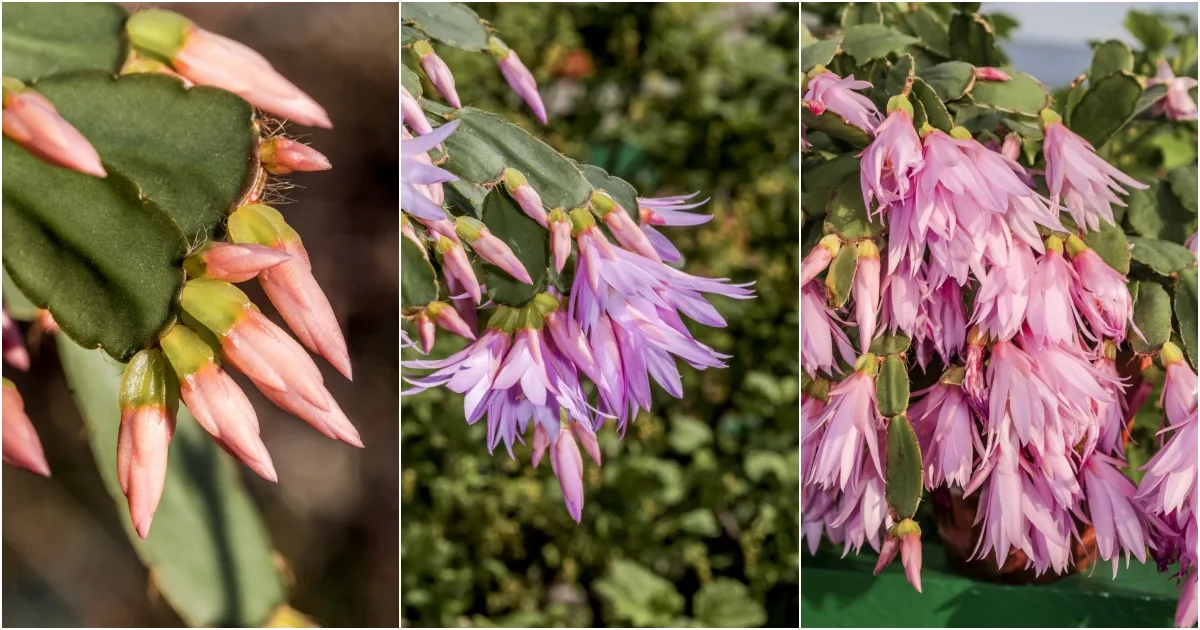
Easter cacti are much like their cousins, the Christmas and Thanksgiving cacti, in that they need to go through a dormant period before they will produce blooms. Unlike their relatives, though, Easter cacti go through a much longer dormant period of around ten to fourteen weeks.
It’s important to keep the plant in a room that will cool down in the evenings and where it receives limited light. Even artificial light can prevent them from entering dormancy.
In early spring, put your Easter cactus back in its usual spot and begin to fertilize and water it as usual. It will set buds and bloom in April or May.
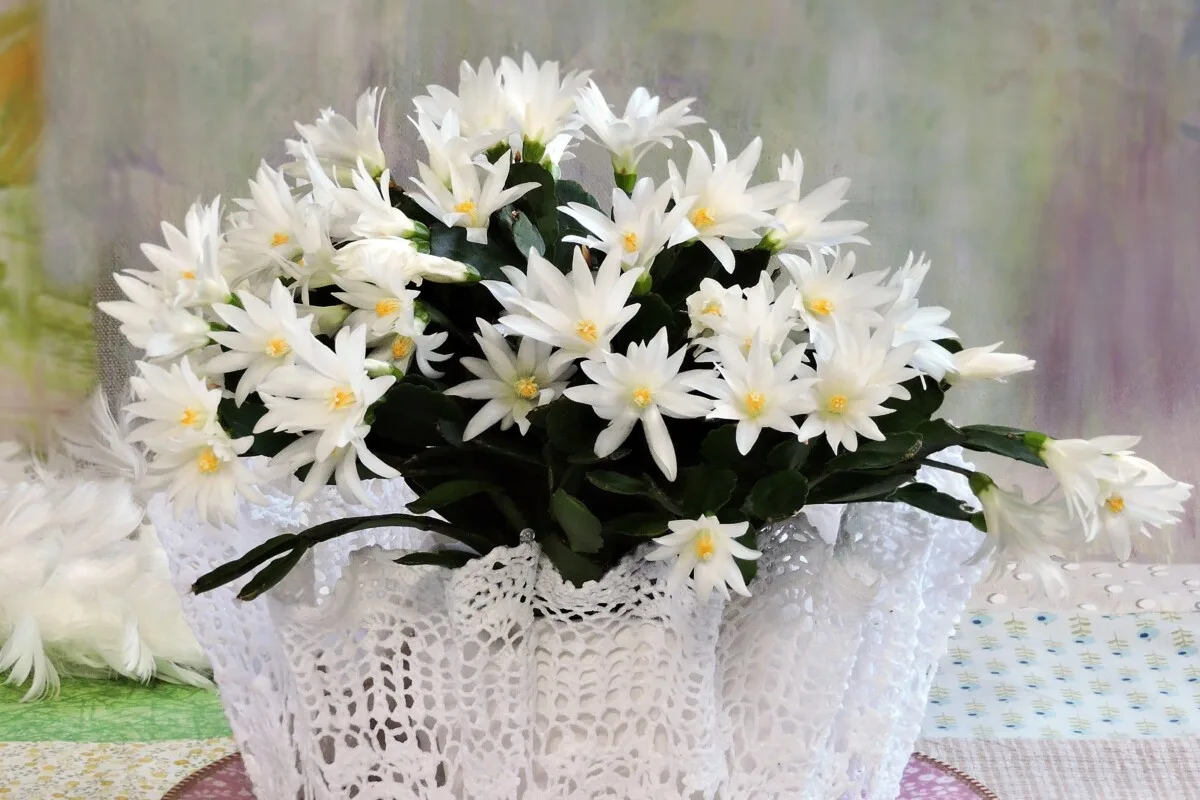
Propagating
You can easily propagate and share Easter cactuses by cutting off a section of at least three cladodes and rooting them directly in potting media.
Be sure you use clean and sterilized scissors or twist off the cutting using your fingers. Allow the cutting to scab over for a day or two and then push it down into premoistened potting mix so that the node where the two cladodes meet is below soil level.
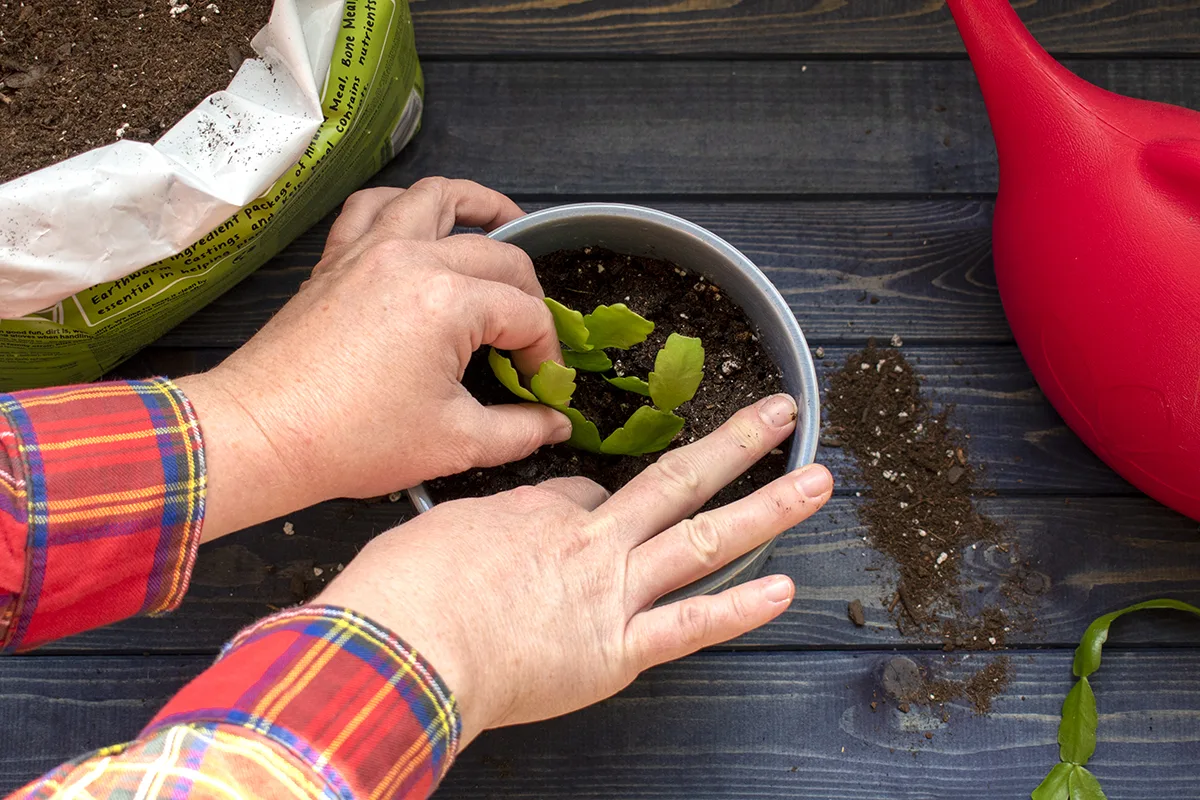
Cover the pot with clear plastic to create a humid environment and keep your cuttings someplace warm. Within a few weeks, new roots will develop at the node below the soil. Be patient, as these holiday cacti grow much slower than other Schlumbergera.
Read our Christmas cactus propagation guide below – the steps for Easter cactus are exactly the same.
Related Reading: How to Propagate Christmas Cactus + 2 Secrets To Big, Blooming Plants
Don’t let their particular needs deter you. While they require more specific care, they aren’t much more difficult to grow than a Christmas cactus. And their blooms are worth it! I like their flowers more than my Christmas cactus blooms, but don’t tell them that.
Read Next:

Get the famous Rural Sprout newsletter delivered to your inbox.
Including Sunday ramblings from our editor, Tracey, as well as “What’s Up Wednesday” our roundup of what’s in season and new article updates and alerts.



